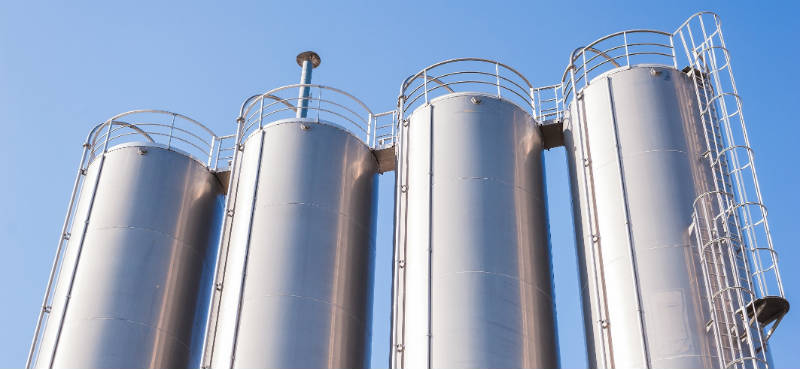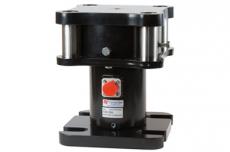Silo / Tank / Hopper Weighing




Over the last 45+ years, Thames Side has specifically developed a range of trade approved load cells, weighing assemblies and instrumentation/electronics for accurate measurement during storage, loading or unloading of bulk solids and liquids.
For communication with external systems, several different protocols are available.
A video summary of our solutions for silo / tank / hopper / vessel weighing:
By installing a silo, tank, hopper, bin or bunker on top of load cells, the weight of the contents can be determined (in kilograms or tonnes) with a very high accuracy (from approximately 0.1%) and easily passed to external data systems.
Silo, tank, hopper, bin or bunker weighing systems are generally used to determine the amount of material emptied into a truck and/or for inventory management. It is often very important to know the amount of material stored in a silo at any time.
Typical materials that are stored in silos/tanks/hoppers:
- Food and drink ingredients, e.g. wheat, flour, glucose syrup, palm oil, grain, ethanol, fruit juices, edible oils such as olive oil etc.
- Plastic pellets
- Biomass pellets
- Fertilizers
- Minerals and mined products, e.g. charcoal, sulphur, nickel, copper, iron ore
- Paint
- Concrete and cement
- And many others...
Our Solutions
During the installation of load cells under a silo, hopper or tank there is the potential for the load cells to be damaged accidentally by welding processes or shock loading when the silo is lowered onto the weighing modules, for example. Our solutions minimise that risk.
- Up to approx. 100,000kg (100 tonnes) total weight of silo / tank / hopper:
Thames Side offers the unique, patented LeverMount® and MasterMount® weighing modules, which are the industry benchmark for a repeatable, fit-and-forget weighing solution that makes the installation simpler, faster, safer and reduces the chances of load cell damage. No hydraulic jacks, or other lifting tools, are needed during the installation because these unique weighing modules have an integral mechanism to lift the silo into the raised position whilst the load cell is installed then lower the silo into the weighing position.
In the very rare event that a load cell would need to be changed, it can be done when the silo is full of product so production processes do not need to stop.
- More than approx. 100,000kg (100 tonnes) total weight of silo / tank / hopper:
The T45 is a reliable, simple, low cost load cell/mounting accessory combination with a capacity of 50 tonnes (50,000 kg) per leg of the silo or tank.
The VC3500 is an extremely robust load cell with high accuracy and repeatability, a very strong weighing module and a long history of dependable performance. It is the benchmark silo and tank weighing module.
The T30 is an integrated load cell and weighing module, enabling very fast and simple installation whilst accommodating significant vessel movement due to thermal expansion and contraction.
The T34 Silo Mount provides a cost-effective, OIML R60 C4 approved weighing assembly up to 60 tonnes capacity per leg, with up to 1,000,000kg capacity per leg also available.
Background Information

A silo weighing system normally consists of three or four load cells, each with a weighing module, a junction box and a weight indicator or transmitter. The weighing module ensures that the correct amount of vertical force is applied to each load cell, preventing it from being affected by non-vertical forces and ensuring repeatability of its signal output. The junction box joins the wires from the individual load cells in a watertight manner and averages the millivolt (mV) signals from the load cells to create a combined mV value that is sent to the input terminals of the weight indicator or transmitter with the minimum possible level of electrical noise. This, in turn, will have several communication options to send the weight to a PLC or PC.
The weighing system can be calibrated by filling the silo with a known weight of the stored material, placing or hanging certified test weights on the silo, or making use of the “theoretical calibration” function of the weight indicator or transmitter (where available). The “theoretical calibration” method uses the average (mean) sensitivity of the load cells (in millivolts per volt, or mV/V) to determine the mV signal that is sent to the weight indicator at specific values of applied weight.
Many of our local weighing system Partners, who are experts in their field, will be able to supply calibration services if you wish to have any silo weighing systems calibrated or certified. Please visit our Partner Network page to contact your local Thames Side partner.
Contact Thames Side now to discuss your requirements for the weighing of silos, tanks, hoppers, bins or bunkers.
We have the experience to provide expert guidance.
.jpg)
.jpg)










